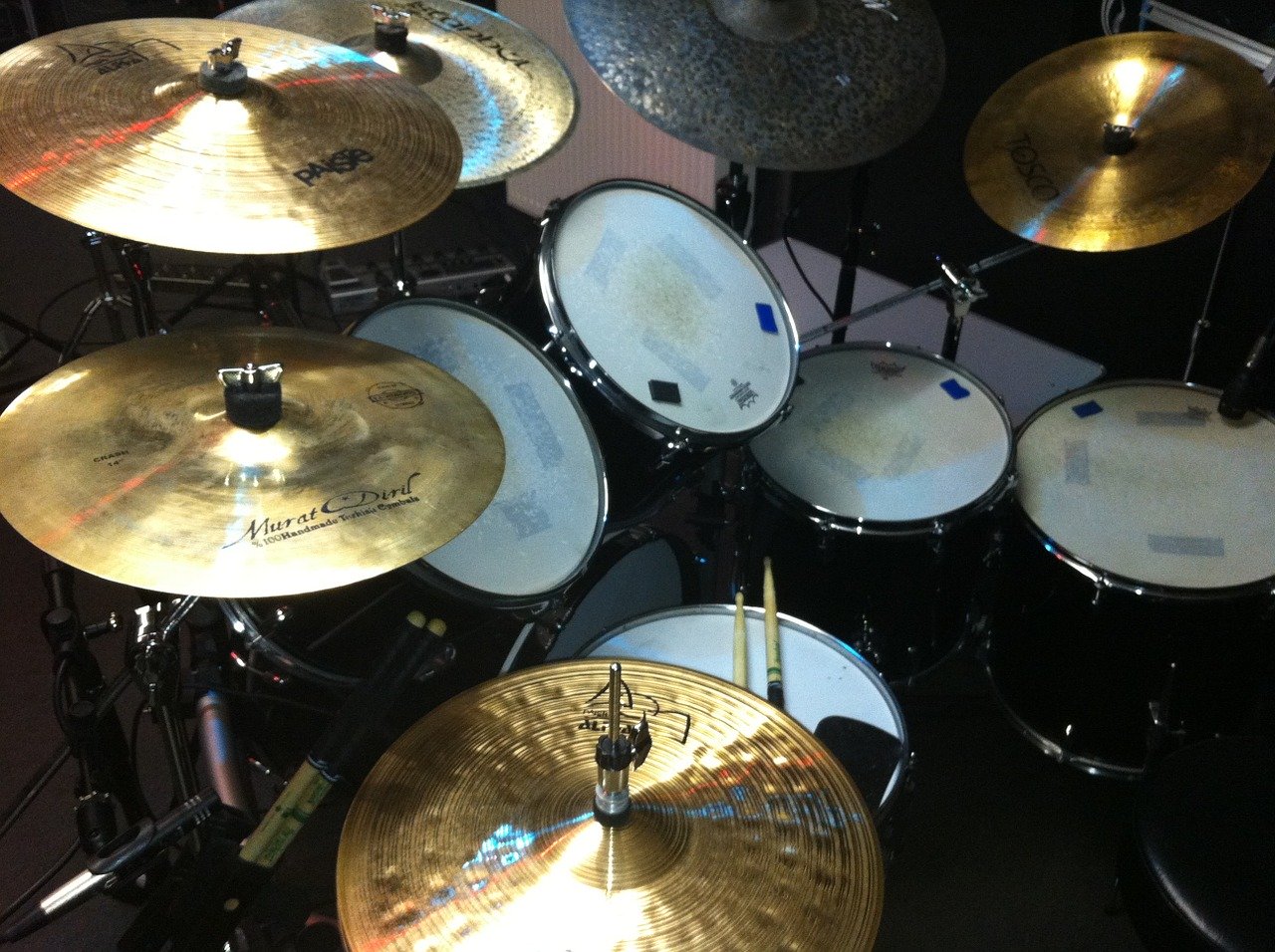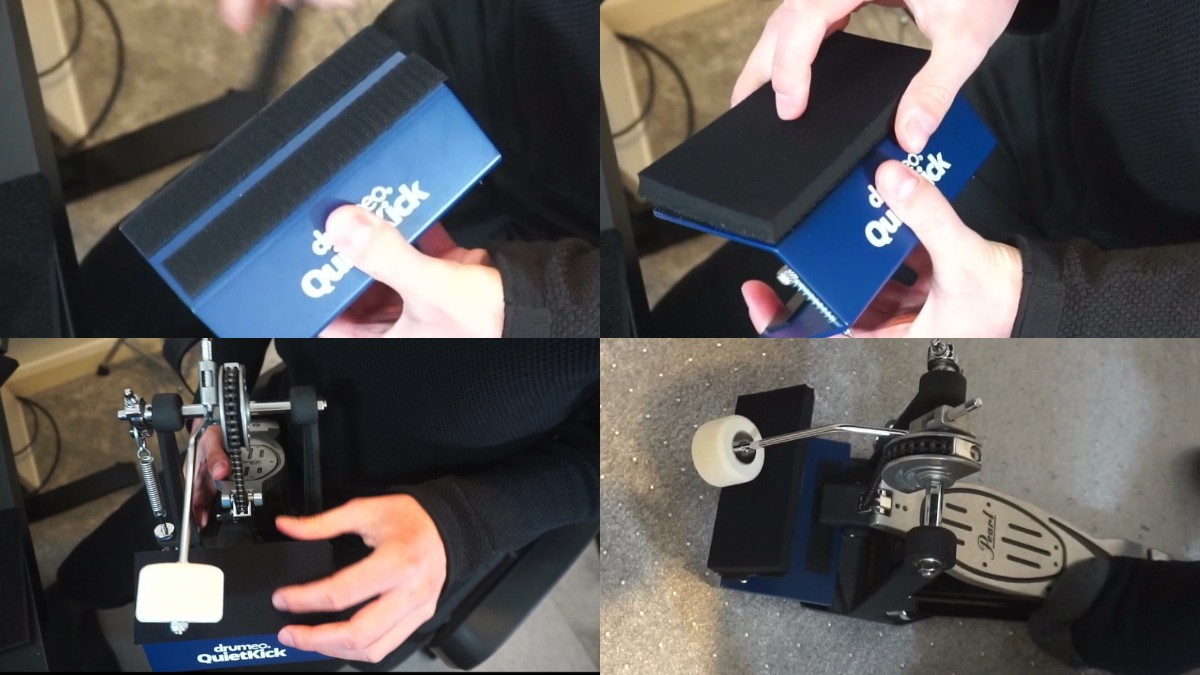Moongel Damper Pads (Review, Alternatives, DIY Options)

Moongel Damper pads are one of the most popular products to dampen drums and reduce overtones. We’ll tell you all you need to know while also discussing alternative and DIY options.
Drum dampening is a very common studio and practice tool for drums. Drummers use all kinds of methods to change the sound of their drums, particularly focusing on snares and toms.
Moongels can reduce overtones of your drums, as well as annoying buzzing from your snares. They can lower the sustain of your drum sound, which can give them a bit more punch. We will discuss the pros and cons of using moongels.
What are Moongels?
Moongel is a gel-like substance produced by the company RTOM. It features a recognizable blue color and its main characteristic is that it is sticky enough to remain on a drumhead no matter how hard the hits are.
Like any other dampening tool, a Moongel causes typical sound effects. Therefore, you can be sure it will diminish all kinds of overtones. More precisely, you may count on less ringing, less volume, less sustain, and less hi-pitch frequencies.
The Pros of Using Moongels
Moongels are a very quick and easy solution to do the following:
-
Reduce ringing, overtones, and high-pitched frequencies.
-
Reduce the sustain of your drum heads (often used on snares and toms to make them more punchy).
-
They are very sticky and they keep their stickiness for a long time.
-
Can reduce the volume of your drums slightly.
-
Can be used on cymbals to change and reduce sustain.
-
Can be placed on both the batter and resonant heads.
-
Can be placed on different parts of your drum heads.
-
Can be used to cover up for bad tuning (some drummers are not going to like this point, however it’s a reason why some drummers use them. Bad drum head tuning can cause horrible overtones. Dampening the sound can make it less noticeable. This could also be viewed as a ‘crutch’, which therefore would be a disadvantage of using Moongels.
The Cons of Using Moongels
-
Great and well-tuned drums might not need to be muffled. Nice overtones might be exactly why your drums sound great.
-
They can choke the sound of some cymbals.
-
They are sometimes used as an excuse for bad tuning (this is not a criticism of Moongels directly, it’s an observation of some drummers that use them!).
How to Use Moongels
There are no rules when it comes to placing the pad on a certain position. You can place it anywhere you want but keep in mind that the sound will depend a lot on that.
The closer the pad is to the center, the more muffled the sound will be. Therefore, you will have to play with it for some time in order to find your desired sound. For extra muffling, you can also put two or more Moongels on the same drum.
Moongel Alternatives
Although Moongels work great, many drummers prefer different kinds of alternatives. The sources are endless in this case and it all depends on the level of inspiration you have.
Sticky Toys
Sticky toys are a popular alternative to Moongels.
These toys are usually made of very similar material, so you may count on similar effects as well.
These are usually cheaper than Moongels. They also in all kinds of shapes and colors too.
Gaffer’s Tape vs Moongels
Another highly popular method of drum muffling and dampening is the use of Gaffer’s tape. This tape is made from cotton, which has a highly positive effect on reducing overtones and all other kinds of unwanted noise.
The adhesive side of the tape is significantly quite resistant to heat and other factors.
They can be a rougher option than using Moongels, but they might suit your needs. I think Moongels are often a cleaner approach when it comes to suppressing certain frequencies.
Drum Rings vs Moongels
Drum rings are another widely popular method of cutting overtones, sustain and overall drum dampening.
They have a more extreme dampening effect compared to Moongels. I personally prefer Moongels for this reason. However, your preference should be based on what you want your drums to sound like.
Be sure to order drum rings that can fit your drumheads.
DIY Dampeners
If you don’t want to bother yourself with ordering and trying all kinds of dampening products, you can also make them by yourself. There are several ways to do this.
One of the most popular methods is to make a dampener from a floor mat. All you need is a welcome or car mat, binder clips, scissors and a little bit of glue.
Simply cut a piece of the mat and glue it to a binder clip. Once you’re done with that, just attach the clip to a drum ring, in the way that the mat presses the drum head. You can try all kinds of sizes and shapes to get the desired results.
Another popular method is to make drum rings from old drum heads. All you need are scissors or some tools that can make the circles more precise. Place the ring on the snare and you will hear an obvious difference.
Moongels on Bass Drum Heads
You can use Moongels on bass drum heads. However, bass drums usually have very large drum heads, which have a lot more vibration. Therefore, you will have to place quite a few moongels on the head to get any decent muffling effect.
If you want to muffle your bass drum, consider putting a muffling cushion or towel inside the drum. This is a very common approach.
Conclusion
That’s our take on moongels. Moongels are often seen as an essential tool for drummers. This type of gel is very durable and can be a great option to reduce the overtones of your drums.
However, keep in mind that muffling of drum heads is not always universally loved by drummers. Make sure to use it based on your needs.
We have also listed alternatives and DIY options, so you don’t necessarily have to stick to these pads.











